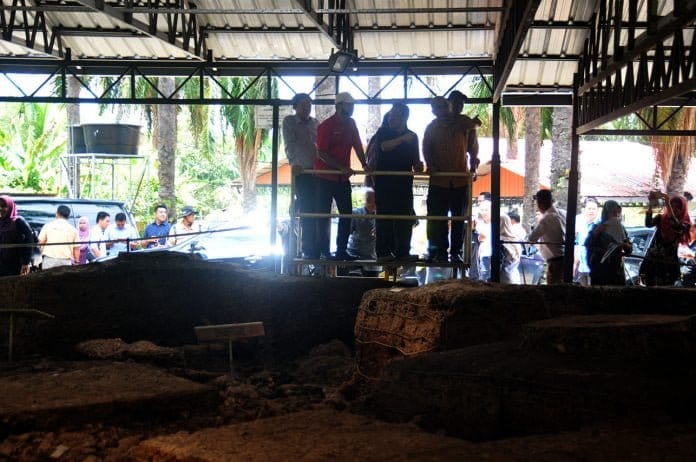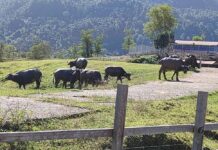
BY MAZLAN HANAFI BASHARUDIN
Universiti Sains Malaysia (USM) will continue to collaborate with the authorities towards making the Sungai Batu archaeological site in Sungai Petani, Kedah a UNESCO World Heritage site.
The collaboration between USM and the Department of National Heritage (JWN) which started in 2007, has uncovered the Sungai Batu early civilisation site, with the discovery of 97 dig sites, 54 of which currently have been unearthed.
Located approximately 10 kms from Sungai Petani and 80 kms from Alor Setar, it sits in an oil palm plantation beside the Merbok-Semeling road.
The Director of USM Centre for Global Archaeological Research (CGAR), Professor Dato’ Dr Mohd Mokhtar Saidin said that findings at the site, which has been confirmed to be much older than Borobudor in Indonesia and Angkor Wat in Cambodia, have provided details on the riverine-related civilisation such as their trading activities, rituals and administrative structure, from studies on centuries-old artifacts.
He said this during the briefing for the Deputy Minister of Tourism, Arts and Culture Malaysia, Muhammad Bakhtiar bin Wan Chik, who visited the site earlier. Also present at the site was the Kedah Menteri Besar, Datuk Seri Mukhriz Tun Mahathir.
Mokhtar added that the site has the potential to be developed for archaeotourism as it fulfils all the necessary requirements to become a World Icon Tourism Product.
“Therefore, the site requires a long-term development plan, strategy and funding to ensure its future as a unique and well-preserved archaeological attraction,” he said.
It was also mentioned that the site could become a national icon as it is within the locality of Bujang Valley and Jerai Geopark, established in 2017. With an integrated development plan, it would be able to attract visitors with its own uniqueness.
Mukhriz then mentioned on the historical value that the site has for the local and global communities. He highlighted four main points on the site: Evidence of high quality iron deposits since 5 BC; ability to perform smelting activities in 535 BC;barter trading done at the port, with evidence of sunken vessels; and being a centre for industry and administration.
He continued by saying that with the support from the Federal government and other parties, Kedah would surely be able to develop and promote the site as a ‘valued treasure’ of the country.
Director-General of JWN, Dato’ Dr Zainah Ibrahim said that heritage has a very broad scope and the country actually has a wide range of tangible and intangible heritage, from past to present, that need to be preserved or conserved. The department is well aware of the value of such items and is always making efforts to preserve them.
The Deputy Minister of Tourism, Arts and Culture also commented on a few issues. He touched on the possibility for Kedah to have another major tourist attraction other than Langkawi, and which the site could be developed into one.
“However, the Sungai Batu site would be developed to cater more to visitors who have an interest in history, archaeology and other related subjects, not just the ‘selfie-stick’ tourists.
“The respective authorities also need to ensure that the site has the needed ‘Outstanding Universal Value’ (OUV), as it has the potential to become a UNESCO Heritage site and another unique attraction for the state and the country,” he said.
Others who were present at the site included the Deputy Secretary-General of Tourism Division, Dato’ Haslina binti Abdul Hamid; Director of USM Research Creativity and Management Office (RCMO), Professor Dr Lee Keat Teong representing the Vice-Chancellor; officials from the Federal Heritage, Tourism and Economic Planning Unit Divisions, Kedah state Excos and officials, as well as staff and students involved with the archaeological site. – USM
















